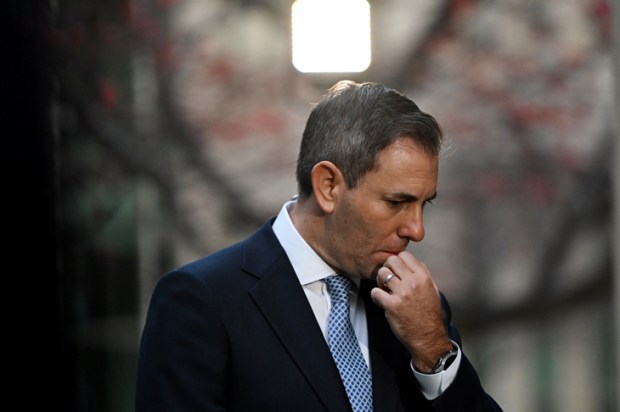In 2013, three economists published a 154-page study in American Economic Review headlined ‘The China Syndrome’ that analysed ‘local labour market effects of import competition in the US’, to give the rest of the title. To no surprise, the study found a surge of 1,156 per cent in Chinese imports from 1990 to 2007 cost about two million US jobs, reduced wages in import-competing industries and forced greater government transfers to victim communities. While the gift of lower inflation was ignored, these textbook consequences, which were mild for an economy as large as the US, were dramatised as the ‘China shock’.
Now an anticipated flood of Chinese goods on world markets is decried as ‘China shock 2.0’ – where the disinflationary benefits are again overlooked. The scaremongering stems from Beijing’s decision to address China’s economic woes by doubling down on the government-directed investment- and export-led model employed since 1978.
Beijing, to be specific, is focusing on the ‘Made in China 2025’ industrial plan announced in 2015. This strategy seeks to marshal financial, intellectual, labour and material resources to advance China’s manufacturing prowess from clothes and toys into sophisticated goods such as aerospace, artificial intelligence, biotech, electric vehicles, fifth-generation mobile phones and semi-conductors.
While Chinese officials from 2018 stopped publicly referring to the plan to mollify trading partners, Beijing has invested trillions of dollars to boost China’s export capabilities in ‘industries of the future’. As a guide to the subsidies involved, from 2017 to 2019, Beijing each year invested an amount equal to 1.73 per cent of GDP into complex technologies, twice as much as any other country spent on industry policy.
Such state aid means today China accounts for 75 per cent of global investment in clean-energy manufacturing. The country boasts more than 80 per cent of global solar photovoltaic module manufacturing capacity and 95 per cent of world wafer capacity, to cite two areas of dominance. China produces the world’s best-value electric vehicles, to pinpoint an industry pivotal to Beijing’s strategy and the one that agitates European and US trading rivals due to their politically important auto industries.
Beijing’s renewed mercantilism is prompting Western countries to restrict know-how and capital to China, implement rival industry plans and hinder Chinese imports. US President Joe Biden in May added to Donald Trump’s tariffs that extended to about US$283 billion worth of Chinese goods by targeting another US$18 billion worth of products, much of them green-related. Biden lifted the slug on aluminium (to 25 per cent), critical minerals (25 per cent), electric vehicles (100 per cent), lithium-ion batteries (25 per cent), semiconductors (50 per cent), solar cells (50 per cent), steel (25 per cent), syringes (50 per cent), and port cranes (25 per cent).
To surely no surprise, short-term political expediency overrides fighting climate change and industrial support in one country is prodding others to retaliate with tariffs and similar state aid, to the detriment of global economic efficiency. Biden, behind in the states needed for victory in November’s elections, acted against China to nullify the voting appeal of Trump’s promise to impose 60-per-cent tariffs on Chinese goods. As for others, Europe in June lifted tariffs on Chinese electric vehicles to as much as 48 per cent. Brazil, Chile and Mexico in May imposed prohibitive tariffs on Chinese steel. Turkey in June imposed an additional 40-per-cent tariffs on Chinese vehicles. Canada is now targeting China’s cars, too.
China, which accuses the West of ‘hyping’ its industrial overcapacity, threatens retaliatory tariffs. Such a step, which would follow a move in 2018 to apply tariffs on US$121 billion worth of US goods to spite Trump, could spark a trade war.
Many worry that Western tariffs on Chinese products will so backfire. They will boost inflation, reduce income and hence economic growth, limit consumer choice, and, by cosseting automakers, restrain their innovation. The West could be harming itself at a time China is developing ways to dodge tariffs, is winning control of critical minerals, dominates green industries, and President Xi Jinping is overseeing the biggest military build-up in history while conducting feints against Japan, Taiwan and the Philippines.
Amid all this, there’s another way, however, to assess China shock 2.0. This is that China’s industrial strategy is self-defeating because it provokes trade barriers and state aid that nullify the approach. This means Xi has no credible plan to steer China through its economic challenges (and Beijing is too indebted to resort to huge fiscal stimulus).
China-wide (business, government and household) debt exceeding of 350 per cent of GDP, the property collapse, perpetual trade wars, the damage of pandemic lockdowns, a demographic implosion and the politically driven crackdown on the private sector have ended the prosperity that legitimised the Chinese Communist party’s rule. The party’s claim to power is via an unstated compact whereby the Chinese accept Leninist control of their daily lives as the price of getting richer.
Xi can’t adopt the only viable escape for China’s woes, which is the consumption-driven model of the advanced world, because such a move would clash with the party’s ideology for total control and would undermine the party’s privileged position to gouge society. Rising joblessness, stagnant wages and reduced household wealth (due to the property crash and falling equity markets) risk propelling China into an era of political change on top of economic tumult. ‘China shock 3.0’, as pundits are bound to call China’s coming upheaval, is likely to surprise the world in many ways. Few, if any, will be pleasant.
Now, the original China shock more described the political ramifications of China’s rise. Western aggression against China could ease – Germany wants to undo the latest EU tariffs. China could export enough to non-Western markets to prop up its economy. Xi’s surveillance and repression measures could contain public resentment. But bitterness is more likely to spill out into the political sphere and the West is unlikely to reduce its wariness towards a country Xi has turned into a menace, even though China’s economy is ‘on the brink’, as Biden assesses.
In an era where leaders were focussed on long-term mutual self-interest, Western countries would help China navigate its economic pain. But that’s not today’s world. China is thus snookered when it comes to defusing what some warn could be the biggest debt crisis in history.
Future studies published in economic journals are bound to show how China’s mercantilism hurt the world by harming China most of all.
Got something to add? Join the discussion and comment below.
You might disagree with half of it, but you’ll enjoy reading all of it. Try your first month for free, then just $2 a week for the remainder of your first year.













